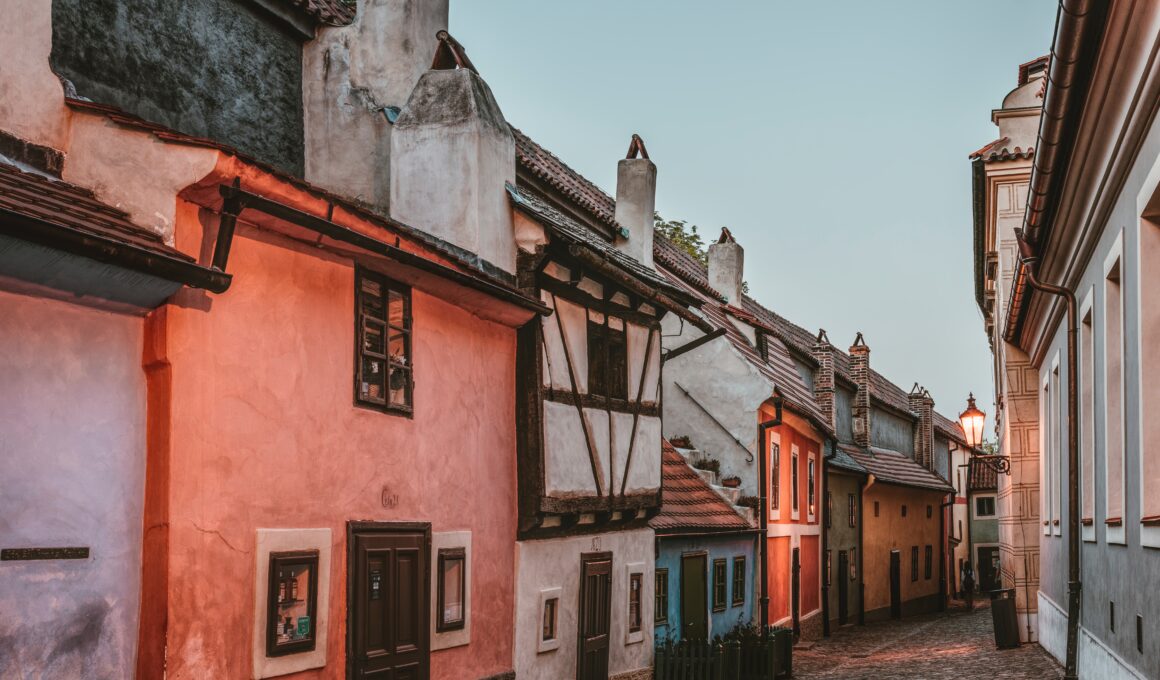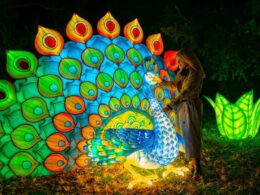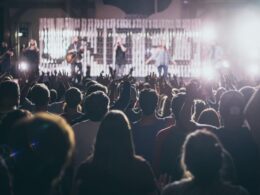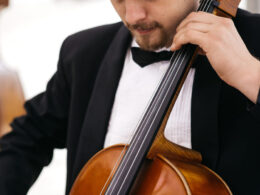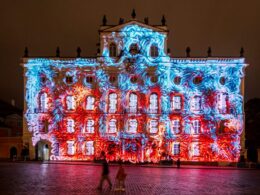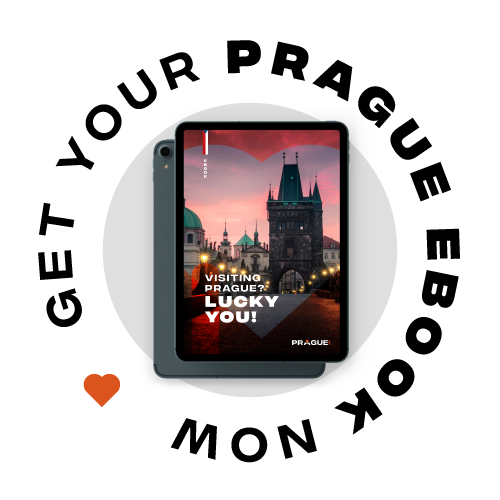Table of contents Show
Golden Lane (Zlatá Ulička) – a picturesque street not to miss
Czech name: Zlatá ulička
Golden Lane (Zlatá ulička), built during the 16th-century as a residence for the guards of Rudolf II. and castle servants, is a street located in Prague Castle (Pražský hrad). The Golden Lane was named for the goldsmiths who resided there in the 17th century. Most of the colorful houses have been converted into shops where visitors may buy gifts and souvenirs. The area’s main attraction is the stunning castle complex that’s the official residence of the President of the Czech Republic. The city center is a UNESCO World Heritage Site.
Where is the Golden Lane Located in Prague & How To Get There
The castle is located to the west of the Vitava River. To get there by public transportation, take line 22 to the Pražský Hrad tram stop. The address of Golden Lane is Zlatá Ulička u Daliborky 38, Praha 11900. Attractions close to the castle are Lesser Town (Malá Strana) and St. Nicholas Church (Kostel svatého Mikuláše).
Opening Hours & Golden Lane Prague Entrance Fee
Summer Tourist Season (April 1 till October 31):
Prague Castle complex – 6:00- 22:00
Historical buildings (Old Royal Palace, St. George’s Basilica, Golden Lane with Daliborka Tower) – 9:00- 17:00
Last entrance is always at 16:40
Winter Tourist Season (November 1 till March 31):
Prague Castle complex – 6:00- 22:00
Historical buildings (Old Royal Palace, St. George’s Basilica, Golden Lane with Daliborka Tower) – 9:00- 16:00
Last entrance is always at 15:40Entry fees depend on the attractions you wish to visit.
Circuit A:
- Basilica
- Golden Lane
- Rosenberg Palace
- St. Vitus Cathedral
- St. George’s Monastery
Adults 350 CKZ
Children 6 16 175 CKZ
Circuit B:
- Basilica
- Golden Lane
- St. Vitus Cathedral
Adults 250 CKZ
Children 6 16 125 CKZ
Circuit C:
- Exposition of the St. Vitus Treasure
- Prague Castle Picture Gallery
Adults 350 CKZ
Children 6 16 175 CKZ
There’s no entry fee to the Golden Lane for children under the age of 6 and visitors with limited mobility.
What To Do & What To See at Golden Lane Prague
The spectacular castle complex in Prague is the world’s largest. This “must-see” attraction is one of Europe’s most significant cultural sites and features a collection of historical artifacts, priceless jewels, and elaborate staterooms. Everything about this jewel of the city is incredible, and you’ll want to see as much as you can. Several tours are available and include:
- Castle Tour of the interiors and St. Wenceslas Vineyards
- Castle District Tour
- Castle Highlights
- Evening Tour
A tour of the castle complex, especially for visitors with children, is available. Visitors interested in history and architecture will enjoy visiting Sternberg Palace, the Imperial Stables, and the St. Vitus Cathedral, Wenceslas and Adalbert, and Rosenberg Palace.
The castle features luxurious gardens that were originally planted to provide fresh fruits, vegetables, and herbs for healing purposes. The decorative gardens, including the Bastion Garden, Orangery, the Hartig Garden, the elaborate Southern Gardens, were planted later. One of the notable attractions on the castle grounds is the Royal Garden and Queen Anne’s Summer Palace.
Special events for music lovers include:
- Classic, Midday Concerts
Lobkowicz Palace hosts classical concerts in the beautiful, 17th century Palace Concert Hall. Guests are treated to a performance by professional, classical musicians, including members of the Czech Philharmonic Orchestra. The green line or tram offers public transportation to Jiřská Street, which leads to Lobkowicz Palace.
- Christmas Music At The Castle
The concert is a memorable event if you’re visiting during the Christmas holiday season. The concert is held at St. George’s Basilica. The capacity is 100 guests, so plan to be at the basilica early if you wish to attend.
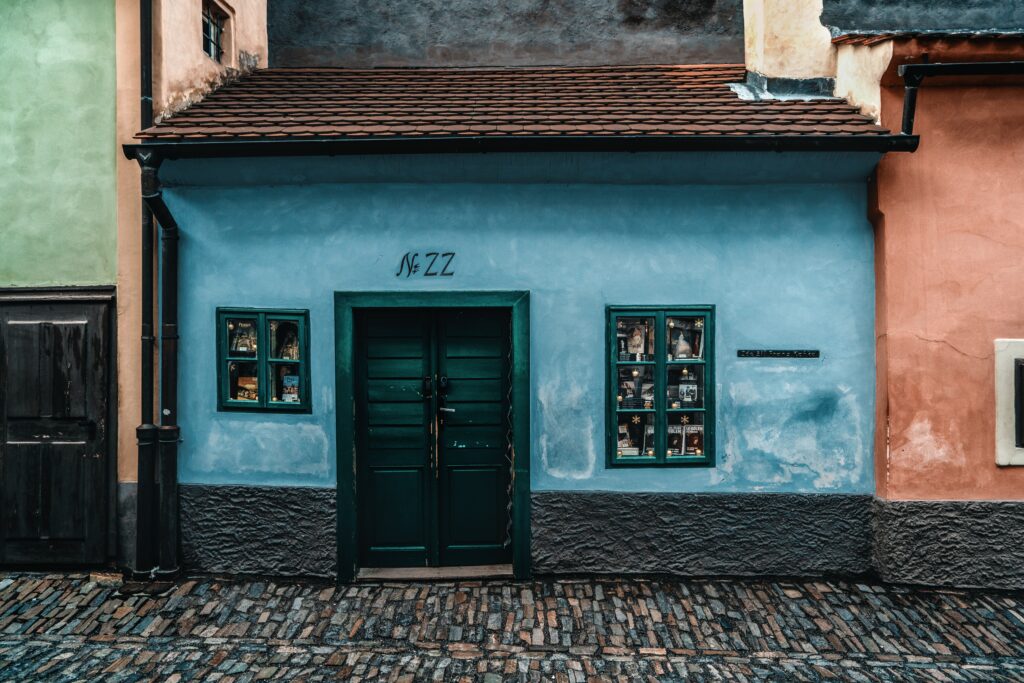
History of the Golden Lane (Zlatá ulička)
The castle originated in the 9th century and is in the city’s historic center. The fortress was originally the seat of the Bohemian kings. Construction on the Romanesque Church that is now St. George’s Basilica was begun in 920. The older Royal Palace was constructed during the 12th-century to replace the older buildings. The newer Royal Palace is the location of offices of the Czech government. The Spanish Hall and Throne Room are reserved for special occasions.
The charming, narrow street between Daliborka Tower and White Tower features the small houses of Golden Lane constructed during the 16th-century. The homes were occupied until the conclusion of the Second World War and completely renovated in the 1950s. Golden Lane should be on everyone’s list when visiting the historic city.
